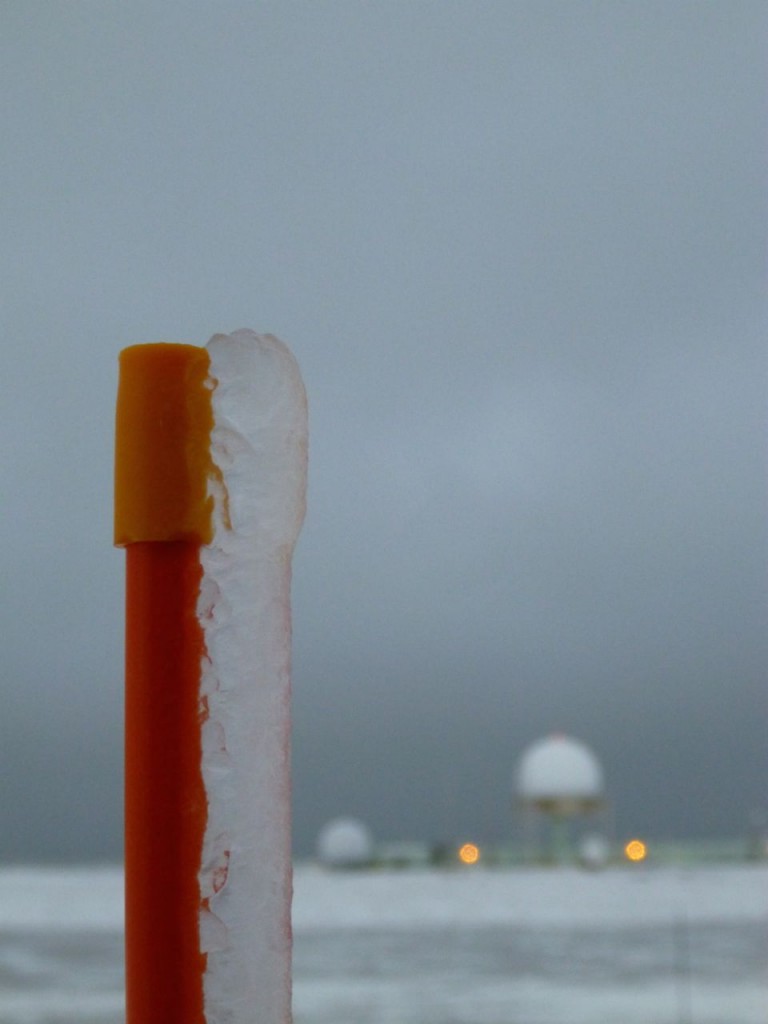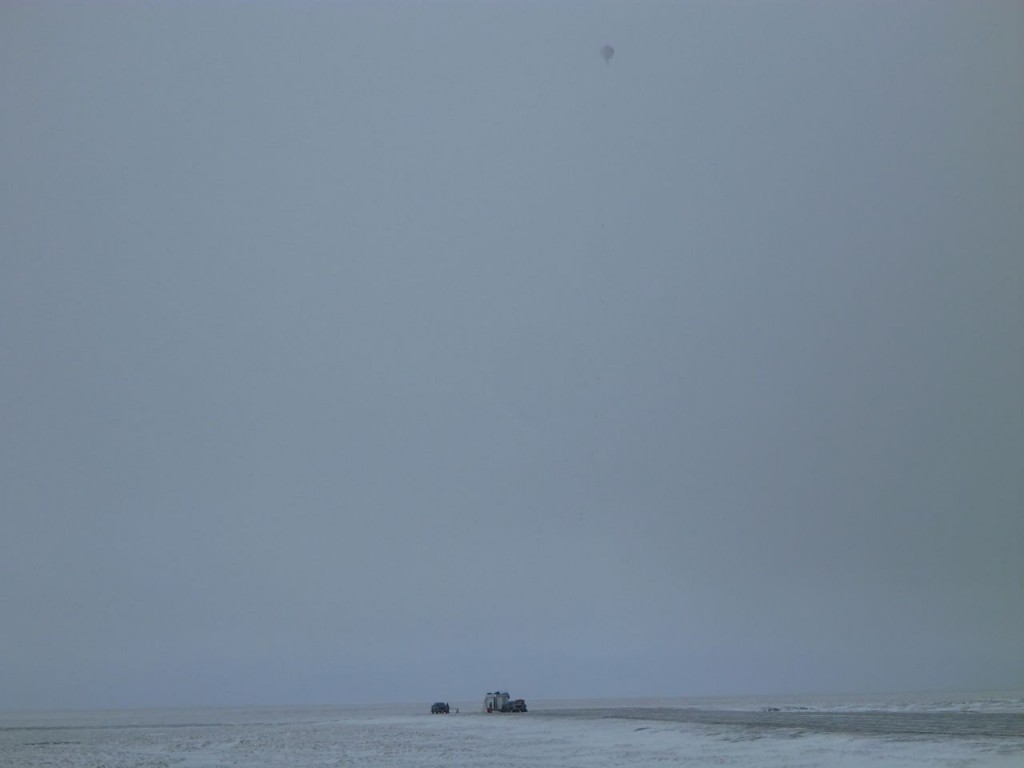That title probably sounds somewhat negative, but ultimately, this was a pretty positive day up here on the North Slope. I’ve made a routine of checking the weather display at the Air Force facility every night before going to bed, and every morning when I get done with my morning workout. At first glance, things did not look good – the forecast called for winds in the 20-25 mph range, and the weather station was confirming this both last night and early this morning. Since daylight doesn’t really appear until 0845 or so in the morning, breakfast around here tends to be a somewhat drawn out thing, with general discussion about plans for the day and the rest of the week. After this discussion this morning, I decided I’d take another look at the winds, and was shocked to see that they had dropped substantially and were holding steady at around 12 mph. This turned a “no way in H-E-double hockey sticks are we flying today” day into a “things are looking pretty good” day. So, Jack and I headed out and decided we’d change things up a bit and operate from one of our pickup trucks, parked at the end of the long runway. When we got out there, however, we realized that we’d be up against a very different obstacle today, as everything we saw (including our truck) was coated in a relatively thick coating of ice.

Ice accumulation on the orange sticks used to mark the edge of the gravel runway area and the stairs leading into the AMF3.
For those not really familiar with airplanes and ice, it’s sufficient to say that the two generally don’t mix. While large manned aircraft have enough power to carry power-hungry and heavy de-icing equipment, small (and most large) unmanned aircraft are not equipped with such systems and icing conditions have been one of my biggest concerns with operating up here in Northern Alaska. So, you may be surprised that I was thrilled by the prospect of testing our abilities in these conditions! To this version of the DataHawk, the ice really poses four main threats. First, ice accumulation on the leading edge of the wing could alter the aerodynamic properties of the airframe and result in a reduced ability of the wing to lift the aircraft and keep it flying. Secondly, such ice accumulation can add weight to the aircraft, and the DataHawk doesn’t exactly have a lot of extra carrying capacity or room for shifts in the center of gravity of the aircraft mass. Third, icing could plug or alter the Pitot tube – the device that measures the speed of the aircraft relative to the surrounding air – resulting in the autopilot not knowing how fast it is moving relative to the air around it and potential loss of control. Finally, since this version of the DataHawk relies on a series of thermopile sensors to maintain level flight, ice accumulation on these sensors could confuse the autopilot and result in in-flight upset.
Without going into the gory details, I can say that we completed six flights in somewhat heavy icing conditions, including ice fog. At the end of the day, we still have both of our aircraft, both are in tact and ready to fly tomorrow, and we learned quite a bit about where the issues may lie when it comes to operating the DataHawk in such an environment. Generally, the icing of the Pitot tube seems to be the biggest concern. Additionally icing of the thermopile sensors does seem to cause a problem, though this will disappear with the next version of the aircraft since that version will feature an inertial measurement unit (IMU) and will no longer be dependent on thermopiles for maintaining level flight. Of the six flights completed, only our last flight resulted in some ice accumulation on the leading edge of the wing, the extent to which this impacted flight was not clear. Jack was able to bring the airplane in for a smooth landing and it seemed to behave as it should on the way down.

A map of today’s flights to test the impact of icing on aircraft performance. As you can tell, our two main points of operation were at the south/west end of the runway and right outside the AMF trailers.
While today’s conditions did not allow us to make extended science flights, these flight hours are very valuable in that they give me confidence that we can operate in less than ideal conditions if necessary and/or desirable. The threat of icing should disappear tomorrow, though winds are forecast to kick back up into the 20-25 mph range. Wednesday afternoon, Thursday and Friday still appear to be our best days for extended flight operations, and I’m looking forward to a lot of DataHawk launches (DataHawk Launch Video) during those days! The Sandia/PSU team had the tethered balloon system out today and we’re working on initial comparisons between the two sensor packages. Lots to do up here!

The tethersonde in action at the end of the runway. The Sandia/PSU team took the balloon up to 200 meters today, and lifted instruments to make measurements of aerosols, temperature, humidity, pressure and winds.


